Pl. Sv. Yura, 2 – Lviv Polytechnic National University building
Architecture
The church had a typical Neo-Gothic appearance with little pinnacles and lancet windows. It had one nave, an elongated vestibule and a polygonal apse with two rectangular two-tier sacristies on both sides and a closed bypass. The orientation of the church’s chancel to the west was situational. The church adjoined the school with its vestibule where the entrance was located. The narthex was accentuated by avant-corpses topped with triangular gables; the northern gable had a statue of St. Michael on top. The main entrance was accentuated by a tall spire and a Gothic perspective ogival portal. In the interior, the nave and apse were bridged with ribbed vaults. A new altar was installed in the church in 1893 according to design by Jan Kudelski; the carving and joinery works were done by Tadeusz Sokulski; the sculptures were carved by Piotr Harasimowicz (Petro Harasymovych); the painting works were done by Konstanty Kaliszewski.
The convent was reconstructed gradually. In 1885 the two-floor school building facing the Sv. Yura square, built by architect Rawski, was reconstructed as a three-floor building with high cellars. It had a modest architectural appearance. According to the 1896 project, the convent building was given a characteristic order Neo-Classicist appearance. The sloping relief of the place, where the building had been constructed, was the reason for arranging high cellars. The façade is noted for its rich architectural plastic decorations and the rhythm of windows; it is accentuated by two five-axis avant-corpses on both ends. The ground floor is rusticated; its windows are semicircular. The second and third floors have rectangular windows decorated with pilasters and semicircular pediments on the second floor and rectangular framings with keystones on the third floor. On the second and third floors, the avant-corpses are divided by pilasters with Corinthian capitals supporting a developed cornice on modillions. The avant-corpses are accentuated by a baroquizing, richly decorated two-tier gables with three ground floor windows and one second floor window. The gables are decorated with volutes and little obeliscs. The entrance is situated in the left avant-corps of the main façade facing the Sv. Yura square. It is flanked by ¾ Tuscan order columns.
In 1896 “The House for Orphans” facing Karpinskoho street was reconstructed too. A third floor was added; its architectural appearance was similar to that of the main building facing the Sv. Yura square. On the occasion of the 100th anniversary of the congregation of the Sacred Heart, the cut corner of the joined buildings was decorated in 1900 with a sculpture of Jesus Christ, placed in a deep niche decorated with rocailles; there also was the Heart of Jesus in a baroquizing cartouche over the niche. The author of the sculpture was Antoni Popiel, a well-known Lviv architect. Unfortunately, all this décor, the sculpture included, was destroyed in Soviet times.
Related Places
Vul. Bandery, 12 – Lviv Polytechnic National University main building
Show full description
Vul. Ustyianovycha, 5 – Lviv Polytechnic National University building
Show full description
Vul. Karpinskoho, 8 – Student Refectory of Lviv Polytechnic National University
Show full description
Personalities
Karol Turkowski – a constructor.
Ksawera Grocholska – a countess, maecenas.
Leo XII – a Pope of Rome.
Madeleine-Sophie Barat – a French nun who founded the congregation of the Sacre Coeur.
Magdalena Jurgas – the owner of the building parcel where the convent of the sisters of the Sacre Coeur was built.
Marie de la Croix – the founder of the congregation of the sisters of the Sacre Coeur in Lviv.
Oksana Kerch (Harashchak, 1911-1991) – a Ukrainian writer, the author of the novel The Bridegroom.
Oleksandr Nadraha – a Ukrainian lawyer, prisoner of Soviet camps, the author of memoirs about Lviv.
Potocki – a family of magnates and maecenases.
Roman Kupchynskyi (1894-1976) – a Ukrainian poet, writer, journalist, composer, critic, public figure.
Stanisław Rożycki – an architect.
Ferdinand d’Este – an Austrian archduke, governor of Galicia.
Franz Pisztek – a Roman Catholic archbishop of Lviv.
Frederick Rinn – a Jesuit priest who initiated the founding of the convent of the sisters of the Sacre Coeur in Lviv.
Czesław Müller – an architect who drew up the project of the construction of a big one-tier assembly hall.
Jan Wysocki – an architect.
Sources
1. State Archive of Lviv Oblast (DALO). Item 2/3/1320
2. DALO. 2/3/1321
3. Central State Historical Archive of
Ukraine in Lviv (CDIAL). Item #186/8/633
4. K. Brzezina,
Klasztor i zakład naukowo-wychowawczy ss. Najświętszego Serca Jezusa z kaplicą
p.w. Najświętszych Serc Jezusa i Marii, T. XII. Kościoły i klasztory Lwowa z
wieków XIX i XX (Kraków, 2004), 21-46.
5. M. Orłowicz,
Przewodnik po Lwowie (Lwów, 1925), 151.
6. О. Керч,
Наречений (Львів, 2006).
7. О. Надрага,
Серед Львівських парків (Львів, 2004), 35-36.
Media Archive Materials
Related Pictures
-
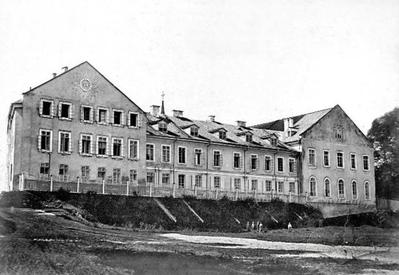 Корпус Національного університету "Львівська політехніка"
Корпус Національного університету "Львівська політехніка"
-
 Монастир та виховний заклад Сакр-Кер
Монастир та виховний заклад Сакр-Кер
-
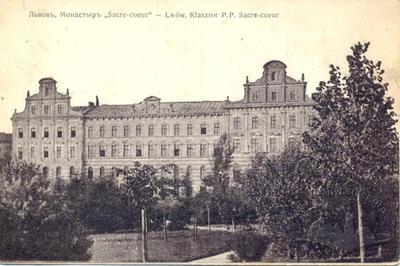 Навчальний корпус "Львівської політехніки"
Навчальний корпус "Львівської політехніки"
-
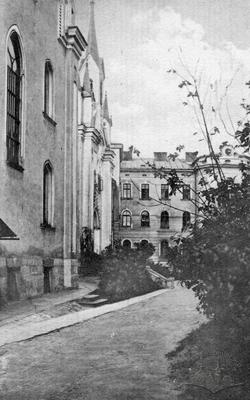 Вигляд навчально-виховного закладу Сакр-Кер та костела-каплиці з боку саду
Вигляд навчально-виховного закладу Сакр-Кер та костела-каплиці з боку саду
-
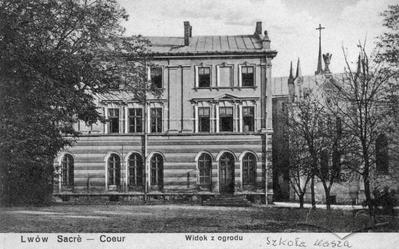 Навчально-виховний заклад Сакр-Кер
Навчально-виховний заклад Сакр-Кер
-
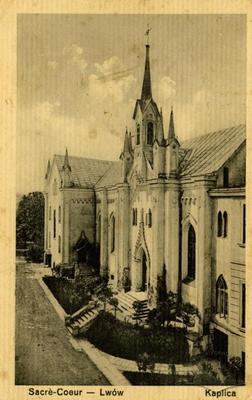 Костел-каплиця Сакре-Кер
Костел-каплиця Сакре-Кер
-
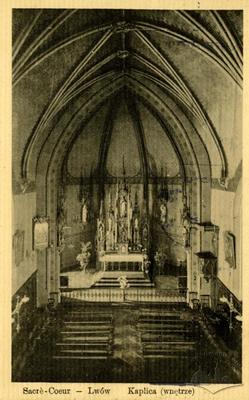 Інтер'єр костелу-каплиці Сакре-Кер
Інтер'єр костелу-каплиці Сакре-Кер
-
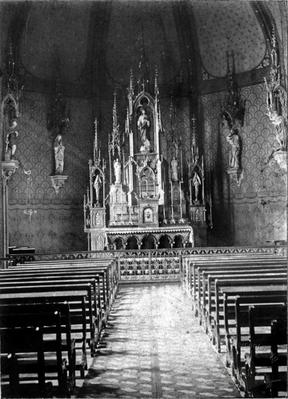 Монастир Сакре-Кер. Інтер'єр каплиці серцанок у Львові
Монастир Сакре-Кер. Інтер'єр каплиці серцанок у Львові
-
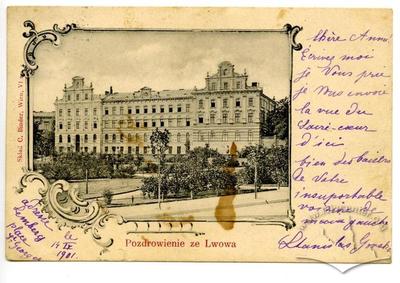 Виховний заклад Сакр-Кер
Виховний заклад Сакр-Кер
-
 Коридор навчального корпусу навчально-виховного закладу Сакр-Кер
Коридор навчального корпусу навчально-виховного закладу Сакр-Кер
-
 Сільсько-господарський інститут
Сільсько-господарський інститут
-
 Building at 2 Saint Yura Square
Building at 2 Saint Yura Square
















